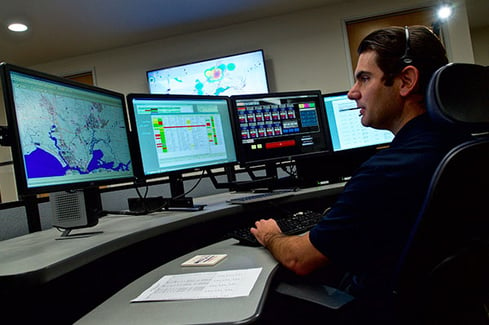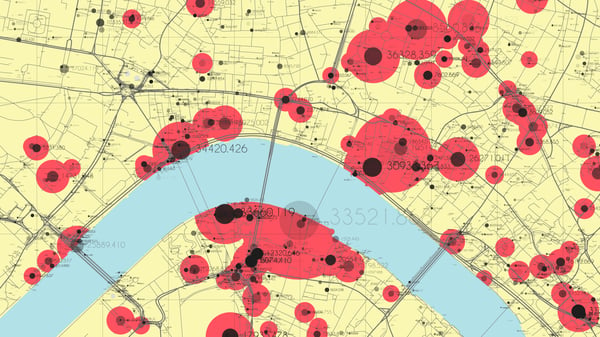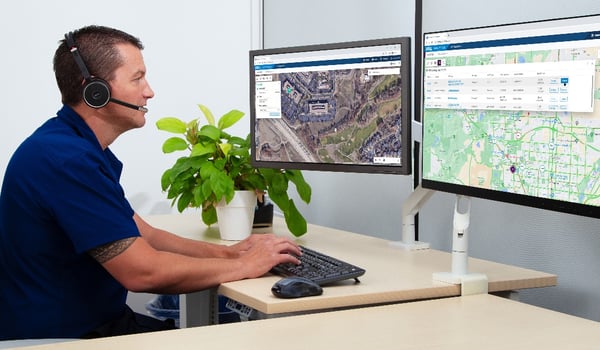4 Must-have Data Points for Dispatch-Billing Alignment and Maximum Reimbursement
EMS Dispatch Data: Why measure it and how to do it better in 2019
(4 minute read) Earlier this year, ZOLL hosted a webinar on Operationalizing Data
Was this information valuable?

(4 minute read)
Earlier this year, ZOLL hosted a webinar on Operationalizing Data. After the webinar, we asked attendees to share what, if anything, their organizations were doing to track KPIs, manage their data, and transform it into actionable insights. Over 300 EMS professionals from across the United States responded, and the results surprised us!
When it came to tracking dispatch data, 40% of respondents said this was not a metric that their organization is tracking today. Not only that, when EMS professionals were asked to rank their “areas of concern,” dispatch ranked substantially lower than other departments, such as compliance and EMS billing. This made us wonder – for the organizations who were not currently tracking dispatch metrics – didn’t this concern them?
Either way, we decided to bring in our resident ZOLL expert when it comes to EMS dispatch data, to weigh in on the survey results and reinforce the importance of tracking these metrics in particular. Darlene Forney was a dispatcher for 13 years. She also managed the entire suite of ZOLL products for a private ambulance agency for 7 years. Today, she writes all of the custom reports for ZOLL customers and teaches Crystal reporting classes. Decades in the industry and now working with customers directly to help them build reports gives her unique insight into the power of dispatch data and how to improve it. 
Knowing that just under half of respondents aren’t tracking dispatch data, why is it important to collect and monitor dispatch metrics in particular?
All calls start with dispatch. If your dispatch center inputs a call wrong, takes too long to dispatch a call, or misses a data entry point, it can cause so many issues downstream – like sending the wrong unit a call, or billing out a call incorrectly. Dispatch data is high stakes. It is extremely important to keep an eye on this data to make sure we are sending units to the right locations and dispatching calls in a timely manner.
Let’s imagine that you discover response times are an issue in your organization. Here’s an example of how you might identify the root of the problem. Say you have 10 minutes to arrive at a scene of a call from the time your dispatcher starts taking the call. Your dispatcher takes 1:30 to enter the call. It then takes them another 2:00 minutes to dispatch the call you have lost 3:30 on your call before your crew even starts to respond to the call. Now your crew only has 6:30 minutes to arrive at the scene. By tracking dispatch times, you can pinpoint where the problem is, perhaps which dispatcher is taking too long to enter and dispatch calls, and rectify the situation. The downstream effect is that you can reach your patients faster, and consistently arrive at the scene of a call on time.
How to better collect and analyze Dispatch data
Being able to see how each dispatcher performs is huge, but gaining transparency into your overall company performance tells the entire story. If you have a dispatcher that take one minute to enter their calls on average is that a problem? Well, if we know that the overall company average is 45 seconds then maybe it isn’t an issue. Your reports don’t have to be overly complex. Just having them simply show dispatch time, response time and accuracy – both totals and averages – for the company and each dispatcher really helps tell the entire story for you as a company.
How to “uncomplicate” your reporting  system
system
You should as a company decide: what do we really care to see? What can make or break us as a company? Is it response times, or is it accurately entering call data? Just measuring data to measure it is meaningless, even the coolest looking report, when filled with data you don’t care about, is a worthless waste of time. If on-time performance or response times matter, measure the things that impact those times. Having hundreds of reports to measure dispatch data means nothing if we don’t do something with the data. Okay so you’re tracking dispatch metrics now – what next? All of the data in the world means nothing if we don’t do something with it. If we have a report that shows that our call entry times as a company are too high our next step should be to look at our call intake process. Are there changes that can be made to the process to shorten those times, to make entering a call easier? After you have changed the process: have you improved our call entry times or hurt them?
Measurements from before the changes and after the changes will show you if there is actual improvement. Once you get the call entry times where you want them to be, continue measuring them to ensure that things are still working well and that a new process issue hasn’t popped up.
Want more information? To watch the webinar, click here:
Further reading:
https://www.zolldata.com/blog/the-most-important-metrics-your-agency-should-be-measuring
https://www.zolldata.com/blog/why-your-ems-agency-should-be-tracking-financial-operational-metrics
https://www.zolldata.com/blog/get-better-at-collecting-analyzing-and-actioning-your-ems-data-in-2019
Related Posts
How EMS Agencies Can Reframe Need and Refocus Resources With Geospatial Analytics
How To Minimize Radio Chatter and Reduce Guesswork With Smarter Dispatch Resource Management
ZOLL Pulse Blog
Subscribe to our blog and receive quality content that makes your job as an EMS & fire, hospital, or AR professional easier.
ZOLL Pulse Blog
Subscribe to our blog and receive quality content that makes your job as an EMS, fire, hospital, or AR professional easier.





